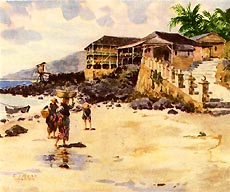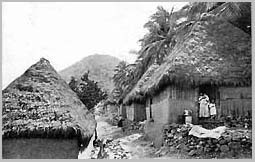 |
|
Vasco
Nunez de Balboa, the famous 16th century Spanish leader credited with
first citing the Pacific Ocean and the first Spaniard to set foot on the
small dot of land he named the Island of San Pedro. The name Taboga
was later adopted from the Indian term aboga, meaning "many fish."
Nearly 450 years after its founding, the island still maintains the simplicity
and flavor of bygone days. |
.
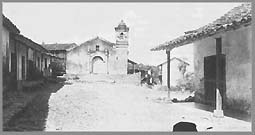 |
|
An
old church at the center of town. Typical of the Spanish colonial settlements
in the New World, the little town of San Pedro sprang up around the church
of the same name. Iglesia San Pedro is claimed to be the second oldest
church in the hemisphere. The early settlers of Isla Taboga were
from Venezuela and Nicaragua. They were enslaved indigenous Indians
who had been brought to the island to serve the needs of the Spanish Conquistadors. |
.
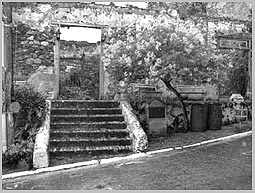 |
|
The
village of San Pedro was founded in 1524 by Padre Hernando de Luque,
dean of the Panama cathedral. He built a comfortable house on the
island and remained there most of the time. It was Padre Luque who
provided funds and blessed Francisco Pizarro and Diego de Almagro before
they set off from Taboga on their conquest of the flourishing Inca Empire.
Isla Taboga still has ruins from these by-gone days of conquistadors and
the first settlements of explorers of the New World. |
.
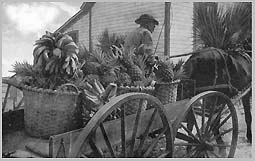 |
|
Pineapples
flourish on Isla Taboga. In addition to his church duties, Padre
Luque raised fruits and vegetables on his plantation. The Padre's
pineapples could well be the progenitors of the pineapple patches that
pepper the island today, and some say the Hawaiian pineapple was developed
through cross pollination with the Taboga pineapple. Taboganos still
recall the venerable priest by referring to a crystalline pool in the folds
of Picacho del Vigia, the highest point on the island, as the "Bishop's
Pool." |
.
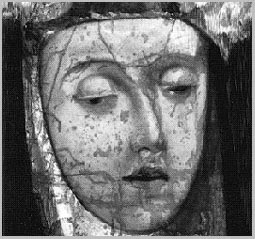 |
|
Santa
Rosa de Lima was conceived on Isla Taboga. The first saint of
this hemisphere, was born on Isla Taboga. According to Taboga historians,
the parents of the young girl who was later to be canonized lived in a
charming house on the beach near Playa Hondo on the northern side of the
island. The house still exists today, although somewhat modernized.
Later, the family moved to Peru where Peruvians refer to the saint as Santa
Rosa de Lima de Taboga. She was known best for her humility and kindness
to those in need. Her caring nature spread quickly, and the sick,
the lame, and the suffering came to her for comfort and guidance for their
salvation. She is also known in many other parts of South America
and in Mexico and also in the Philippines. |
.
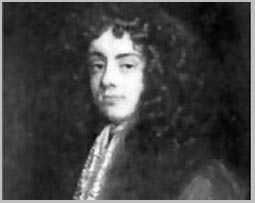 |
|
Welsh
Buccaneer Henry Morgan plundered Isla Taboga. Beginning in the
latter part of the 16th century, many came to the shores of Isla Taboga
in a search of gold, pearls, and other riches of the seas. Pirates
were among them. In 1671, Morgan, after sacking Panama City, sent
his pirates to the island with instructions to burn everything to the ground
and bring back all the gold, silver, and merchandise worth its salt.
Hawkins is said to have turned the island into a trading center for his
plundered goods. More pirates came to Isla Taboga, and logic says
buried treasure must abound. In 1998, that logic panned out when
workers preparing to set the foundation for the island's new Health Clinic
unearthed 1000 pieces of silver dating back to the 17th century. |
.
| Numerous
legends and romantic myths have been woven into the traditions and folklore
of the island. "... One who did make it to the beach was even more mortified
when he learned that there was no such army, much less a beautiful woman
leading it." |
|
|
|
The
Virgen del Carmen battles pirates. According to Taboga lore,
a pirate ship attempted an attack on the island. When the pirates
reached the shores of Isla Taboga, they met an enormous army face to face
that was headed by a beautiful woman. The pirates were terrorized
by the vision and fled back to their boat. To this day, Taboganos
are convinced that it was the Virgin del Carmen who saved them, and each
year on July 16th the patron saint blesses the fleet in Taboga Bay. |
.
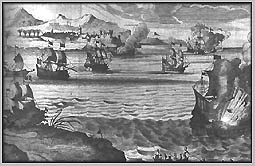 |
|
El
Morro, the little island you can walk to. Linked to the island
at low tide by a sandbar, is El Morro, a small rocky islet, where at the
end of the 17th century the Spaniards established a fort to defend Taboga.
During the wars of Independence in Latin America, it was the three cannons
on El Morro, manned by 10 Spanish soldiers, that fought off the attacks
of Englishman John Illingworth, the Chilean warship Rosa de los Andes,
and the Peruvian Frigate Pichincha. |
.
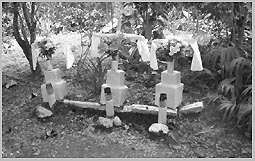 |
|
The
Three Crosses. In a later attack by John Illingworth, the invaders
took Taboga, the inhabitants fleeing to the hills. Three of the invaders
were killed and buried by the villagers, who marked the graves with wooden
crosses. With the passing of the years, cast iron crosses embedded
in a mortar base replaced the wooden markers. To this day, Taboganos
in the vicinity of "Las Tres Cruces" never fail to light a candle in memory
of the three who dared to disturb the peace of their little island. |
.
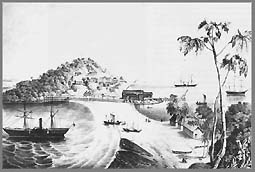 |
|
The
Pacific Steamship Navigation Co. Around 150 years ago, Taboga
became the port of choice for Panama City and the mainland because the
island's northern shore has waters deep enough to accommodate larger ships.
Thus, Taboga came to play an important role in shipping. The Pacific
Steamship Navigation Co. built workshops, a ship repair facility, supply
stores and a coaling station, and brought over hundreds of Irishmen to
work in the supply base. It was at about this time, too, that the
gold seeking 49'ers discovered Isla Taboga, and many stayed on the island
enroute to California. A trace of Anglo-Saxon names can still be
seen on sparkling white tombstones in the island's cemetery. |
.
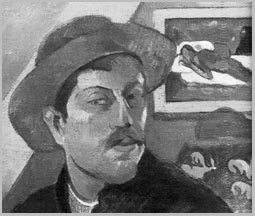 |
|
Post-impressionist
painter Paul Gauguin. In 1887, after working a short stint for
the French effort to build a canal, the French Post-impressionist painter
Paul Gauguin came to Isla Taboga looking for a place to paint far from
parisian fanfare and conventionalities. Some say he tried to buy
a house on the island using his Peruvian grandmother's money. Perhaps
we can say the island life wetted his appetite for the simpler things in
life, as reflected in his use of bright colors and flat perspective.
From Isla Taboga, Gauguin went to French Martinique before moving on to
Tahiti where the subjects for his paintings later brought him fame and
glory. His colorful paintings that were later to reflect his eye
for beauty most certainly were first conceived on Isla Taboga, the Island
of Flowers. |
.
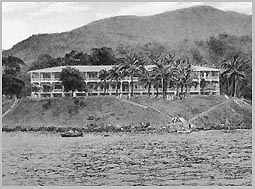 |
|
Isla
Taboga and the Panama Canal. The island also played an important role
in the construction of the Panama Canal. In the 1880s, the French
constructed a 50 bed, $400,000 retreat for their canal workers attempting
to build a canal. This same building was taken over by the United
States in 1905 and used as a rest and recuperation center for Panama Canal
construction workers. It served this purpose until January 1915,
when it became a vacation resort for employees and their families and was
known as Hotel Aspinwall. During World War I, Aspinwall became an
internment camp for German prisoners. After the war it was once again
the hub of Taboga's social life until 1945. Aspinwall is gone but
many still recall this hotel and the part it played in social activities
of that by-gone era. |
.
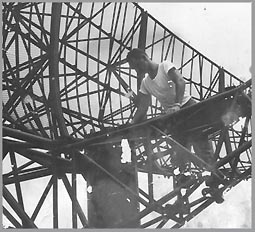 |
|
PT
Boats in World War II. During World War II, the U.S. Navy had
a "mosquito boat" training base on the tiny island of El Morro just off
Isla Taboga's northern shore. The heroic record of these boats in
the Pacific Theater of War proved the efficiency of the officers and sailors
on El Morro. Isla Taboga was also the site of attempted Japanese
espionage when spy Yoshitaro Amana, head of a Japanese spy ring, tried
to set up a commercial business on Isla Taboga so that the Japanese could
ascertain what ships were transiting the Panama Canal. He was discovered
in a sting operation and deported back to Japan. As well, gun emplacements
at strategic points on Isla Taboga and lookout points atop El Morro made
it possible to increase the security of the Panama Canal. |
.
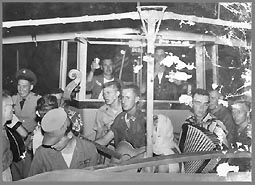 |
|
The
US presence on Isla Taboga in recent Panamanian history is a treasured
past for the island and for Taboganos. Military and Civilian personnel
integrated themselves with island life and performed many services for
Isla Taboga which included improving its infrastructures and providing
medical assistance. They brought entertainment to the island as well
by creating an outdoor cinema, participating in sports, and constructing
the island pier to serve visitors. Taboganos old enough to remember
recall with enthusiasm the days of US Military presence on the island. |
.
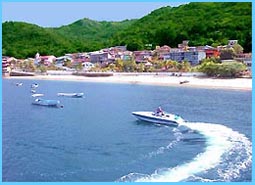 |
|
Isla
Taboga's wholesome, healthy atmosphere has been recognized since colonial
days when Panama City residents flocked to the island for a respite from
the city heat. On several occasions throughout its history, Isla
Taboga has been un-officially the summer capital of Panama City.
Each weekend, people from many parts of the world visit its tranquil environs,
swim in its tropical waters, stop to smell the roses. |
|
